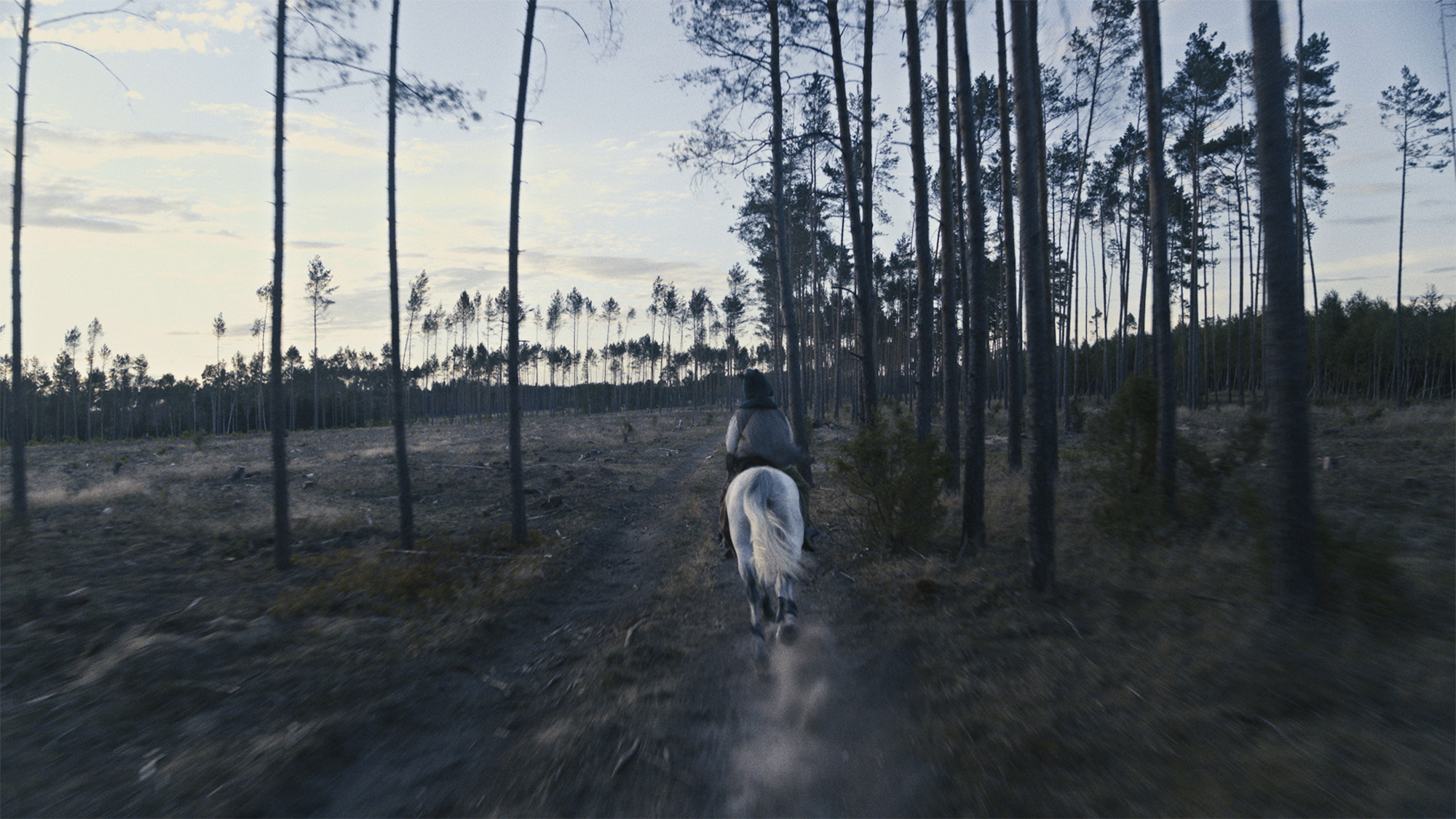In the multi-channel video installation The Demon's Brain , Agnieszka Polska deals with the ethical question of how individuals can assume social responsibility in the face of an overwhelming present. The starting point for the work are letters from the 15th century that were addressed to Mikołaj Serafin, the manager of the Polish salt mines. In The Demon's Brain, Polska tells the fictional story of the riding messenger of documents in a mixture of live action and animation. On his way, the boy loses his horse and gets lost in a forest. There he has an unexpected encounter with a demon, in whose monologue Christian theological ideas are linked to today's developments and conditions of raw material consumption and environmental destruction, data economics and artificial intelligence.

Agnieszka Polska: The Demon's Brain
September 27, 2018 - March 3, 2019
Hamburger Bahnhof - National Gallery of the Present
Duration September 27, 2018 - March 3, 2019
Location Hamburger Bahnhof – National Gallery of the Present
Website www.preisdernationalgalerie.de
The exhibition is made possible by the Friends of the National Gallery and supported by BMW.
Back then, salt was a valuable commodity and represented an important source of income for the Kingdom of Poland. The mining of the mineral was made possible by a unique agreement. King Władysław III (1424–1444) transferred the mines to Serafin, who ran them from 1434 to 1459 within a feudal social order like an independent, early capitalist company: they mainly employed paid workers, financed the mines through regularly called in liabilities and produced mainly for the market that they wanted tried to control. In addition, salt production was organized in a complex division of labor. Thanks to a close network of lenders and debtors, Serafin ensured that operations were barely kept running. From the letters written in Latin, one can see that the mines experienced rapid economic growth, but at the expense of human and natural resources: ailing and dissatisfied farmers in the surrounding area, unsustainable deforestation and the constant threat of plague are just a few of them Problems that are handed down therein.
The installation The Demon's Brain , designed for the museum's Historical Hall, consists of four large-format projection surfaces and a wall with texts. The films show different scenes that run in an endless loop. However, they are synchronized in such a way that they also comment on each other. A deep, subliminal rhythm also unites the videos together. This interconnection bridges time periods. After the demon lets the messenger know that he can change the course of history, his recurring proclamation “It is not too late.” wanders through the historical hall and turns into an appeal to the *the viewer*in.
In The Demon's Brain, Agnieszka Polska negotiates the possibilities of individual action and taking responsibility. Although the messenger seems to follow the demon's call, from our perspective the development has probably not changed with this intervention. Does the individual's actions have any influence on the complex processes in the world around us and how can we decide which measures are actually right? Who can we trust with this decision?
The wall of text suggests a way out. Interspersed between excerpts from the historical letters to Serafin are comments on the economic, ecological and technological themes of the work, which come from the essays specially commissioned for the accompanying catalogue. The ability of subjects to act is contrasted with descriptions of abstract processes. Active action, reflection and exchange with others as well as the recognition of long-term patterns can be the first steps to overcome the powerlessness of the supposed ineffectiveness of personal actions.
Agnieszka Polska (*1985 in Lublin, Poland, lives in Berlin) was awarded the 9th Prize of the Nationalgalerie last year. The jury consisted of Zdenka Badovinac, director of the Moderna galerija, Ljubljana, Hou Hanru, artistic director of the MAXXI Museo nazionale delle arti del XXI secolo, Rome, Sheena Wagstaff, Leonard A. Lauder Chairman for Modern and Contemporary Art of the Metropolitan Museum of Art, New York, Sven Beckstette, curator of the Nationalgalerie im Hamburger Bahnhof - Contemporary Museum - Berlin and Udo Kittelmann, director of the Nationalgalerie - Berlin State Museums. This solo exhibition and an accompanying publication are part of the award.